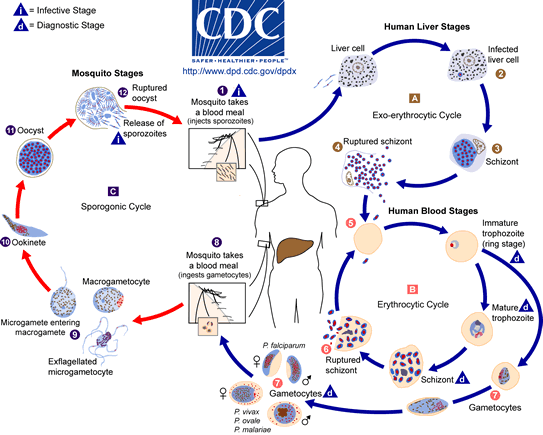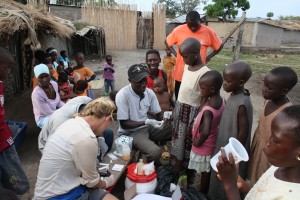QUESTION:
What are the three stages of a typical malaria attack?
ANSWER:
I’m not entirely clear as to what you’re asking with this question; do you mean the stages of infection within the human host, or the successive changes in the symptoms during the fever cycles that characterise a malarial episode?
If you mean the latter, then the three typical stages of symptoms during a malaria attack are characterised by an initial feeling of coldness, which is indicative of the early stages of the fever. This develops into the patient feeling much, much warmer, and even uncomfortably hot—at this point, the patient’s fever can spike dramatically, up to over 40 degrees C. The body combats this fever by sweating profusely—these sweats constitute the third stage of the attack, and have the effect of gradually bringing the patient’s temperature down.
These three stages are repeated at intervals of 24, 48 or 72 hours, depending on the type of malaria. This is due to the cyclical and coordinated bursting of red blood cells, releasing the next life stage of the malaria parasite, and which causes the bulk of the fever in patients.
If you intended to ask about the stages of infection during the life cycle of the malaria parasite, the image below (from CDC), is a very clear and useful guide to the incredibly complex life cycle of Plasmodium species.

